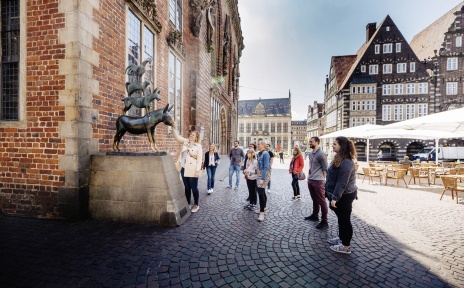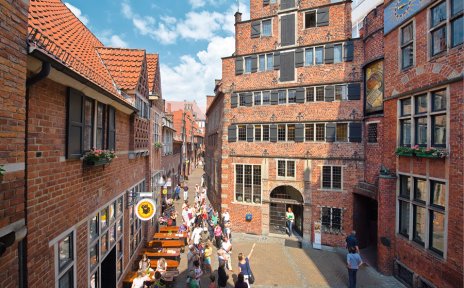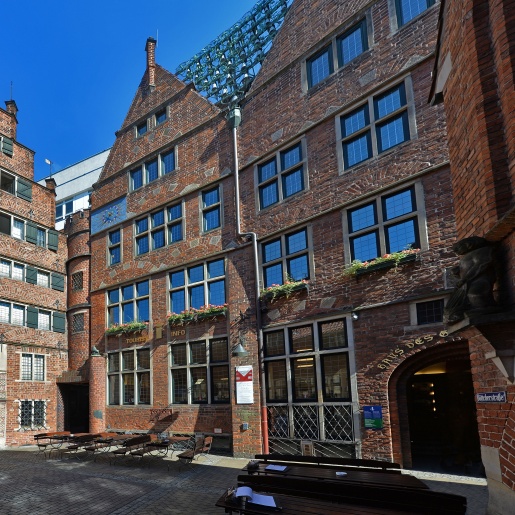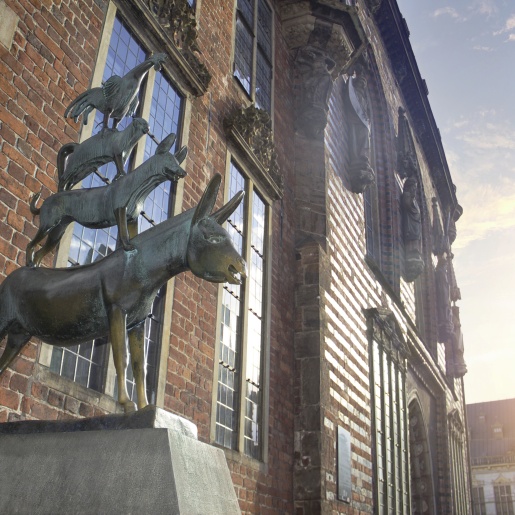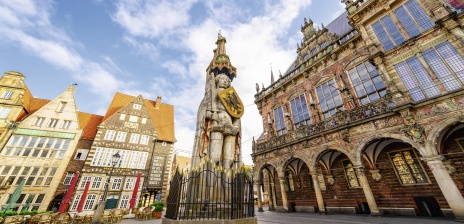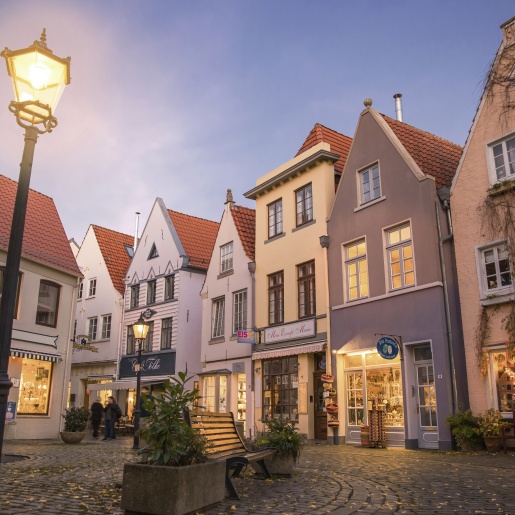Böttcherstraße
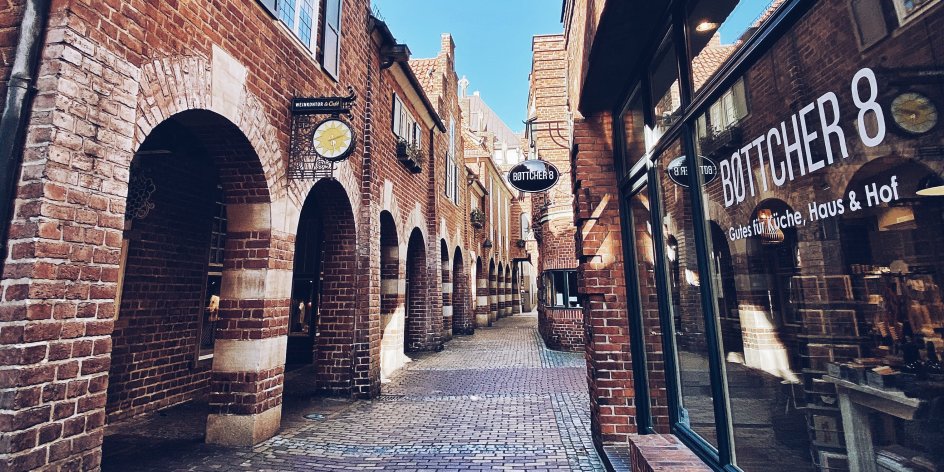
© Privat / JUA
If you want to discover Bremen, you shouldn't miss the beautiful Böttcherstraße in the heart of the city. Built in the early 20th century by Ludwig Roselius, this gem is a true work of art. The street not only impresses with its unique symbiosis of traditional and expressionist brick architecture. It also has interesting museums and numerous opportunities for you to feast and browse. And a very special highlight awaits you with the Haus des Glockenspiels.
Unique Architecture
Built between 1922 and 1931 by Ludwig Roselius, the coffee merchant and inventor of the decaffeinated coffee HAG, Böttcherstraße was then, as it is today, Bremen's secret main street and a synonym for lifestyle. At 108 meters between the market square and the Weser, it offers a successful mix of enjoyment, trade, art and culture.
Artistically designed by Bernhard Hoetger, the buildings on Böttcherstrasse are a rare example of expressionist architecture. Unique buildings make the street one of Bremen's main attractions. For example, the "Haus des Glockenspiels", where 30 Meissen porcelain bells ring out from January to March at 12 noon, 3 p.m. and 6 p.m. and from April to December between 12 noon and 6 p.m. on the hour. At the same time, 10 carved wooden panels depicting famous ocean conquerors rotate on the front of the house.
Bremen's enchanted Diagon Alley
In Böttcherstraße, you'll feel like you've been transported to a Harry Potter movie set. Immerse yourself in Bremen's Diagon Alley and marvel at the unique brick architecture. You won't find any stores selling wizarding supplies here, but you will find special little stores - from arts and crafts to home-made sweets.
Museums & Crafts
Museums & arts and crafts
Museum lovers will find what they are looking for in two buildings on the street: in the Böttcherstraße museums. In the museum in the Roselius House you can see an important collection of Low German domestic culture and works of art from the Middle Ages to the Baroque period. The Paula Modersohn-Becker Museum is the world's first museum dedicated to a female painter and shows works by the eponymous artist as well as special exhibitions on classical modernism.
The Handwerkerhof in the Paula Modersohn-Becker Museum is reserved for contemporary applied art. Since 1926, you have been able to watch craftspeople at work here and even today, goldsmiths and glassblowers are still at work before the eyes of passers-by.
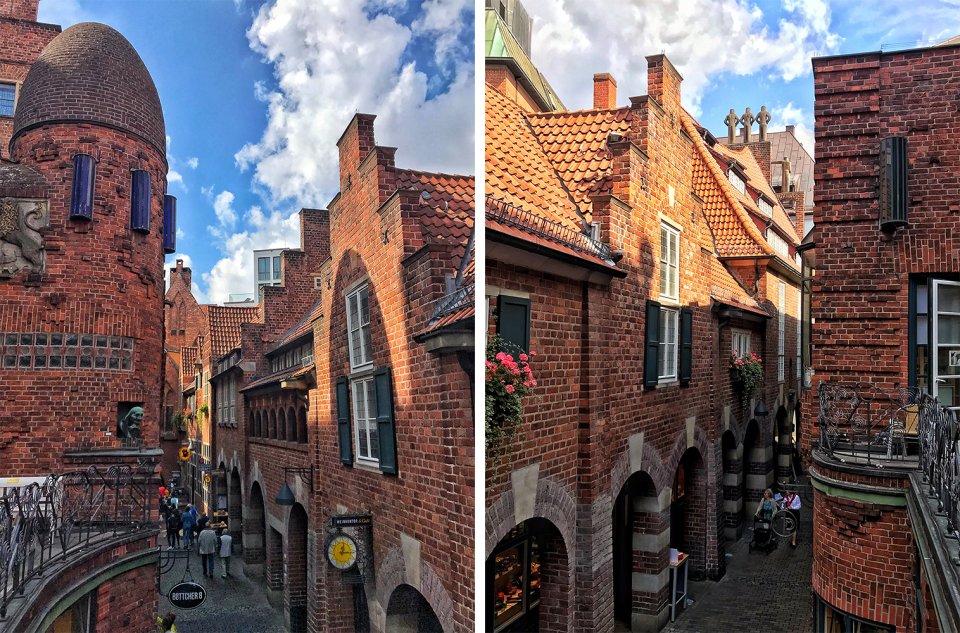
© Privat / JUA
Ausblick auf die Böttcherstraße
Browse, Store, Feast
Many small specialist stores offer everything from souvenirs, gifts, special household items, tea and wine to glass art and design. It is particularly worth stopping by the Bremer Bonbon Manufaktur. Here you can see how the colorful treats are made, nibble on one or two Bonschen (Bremish for sweets) and, of course, buy them.
Many stores are also open on Sundays.
Seven Lazy Fountains
The Seven Lazy Fountains stand directly in front of the window of the Bremer Bonbon Manufaktur. Bernhard Hoetger dedicated his work of art to the well-known story of the seven "lazy" sons of a farmer. They were unable to find work in Bremen and moved out into the world: rich in knowledge and experience, they returned years later and applied modern methods to their father's farm. By the way: the four Town Musicians also adorn the fountain.
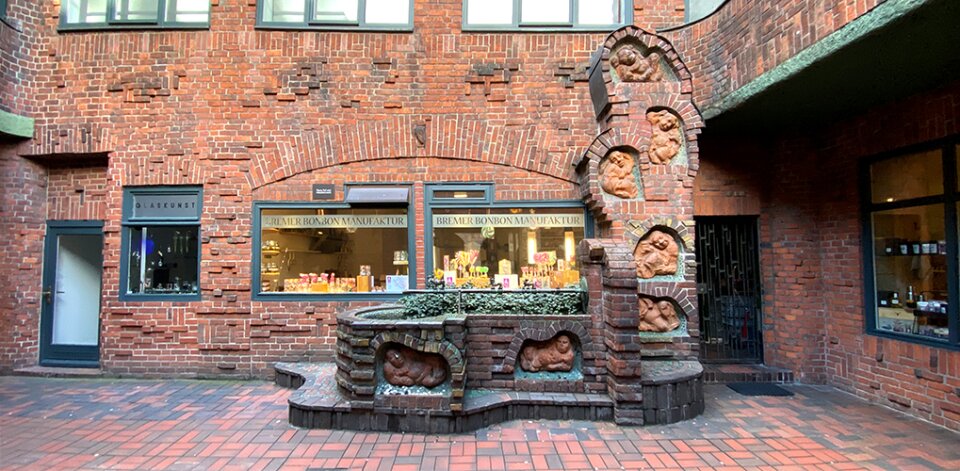
© WFB/Ingrid Krause
Sieben-Faulen-Brunnen und Bonbon-Manufaktur in der Böttcherstraße
Public Transportation
Streetcar lines:
Domsheide" stop: 2, 3, 4, 6, 8
Bus lines:
Bus stop "Domsheide": 24, 25 / Bus stop "Martinistraße": 25
Night lines:
Stop "Domsheide": N3, N4
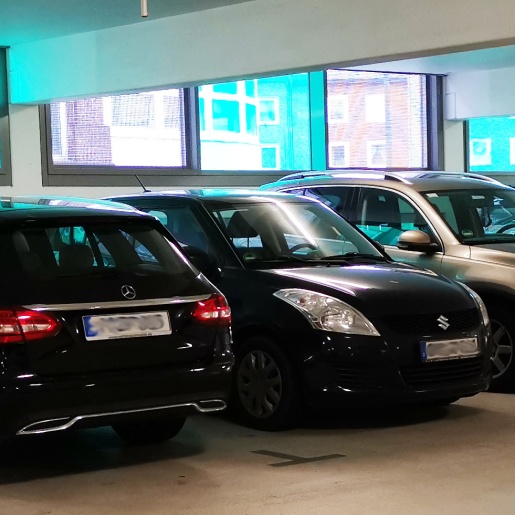
Park and Ride
© WFB-SIS
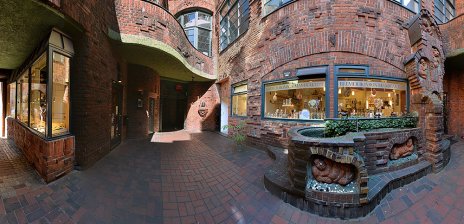
A View of Böttcherstraße in 360 Degrees
© WFB/Michael Bahlo
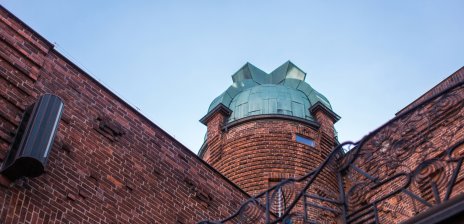
Böttcherstraße Museums
© Museen Böttcherstraße
